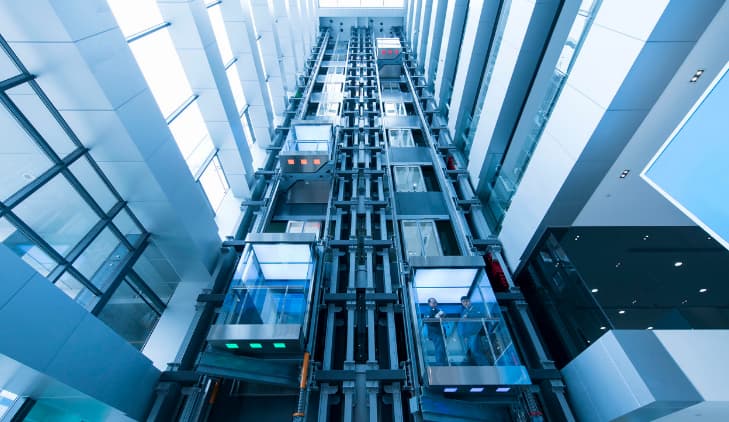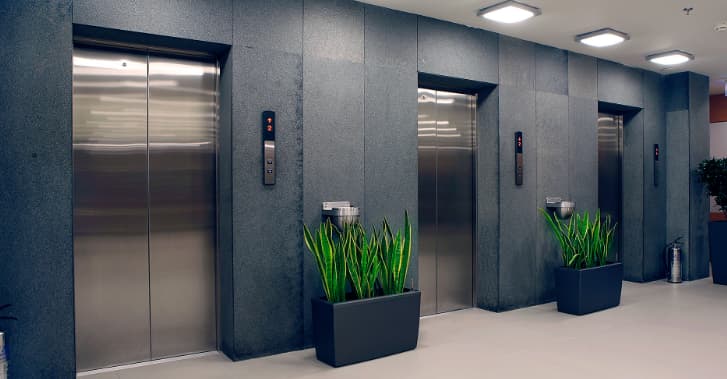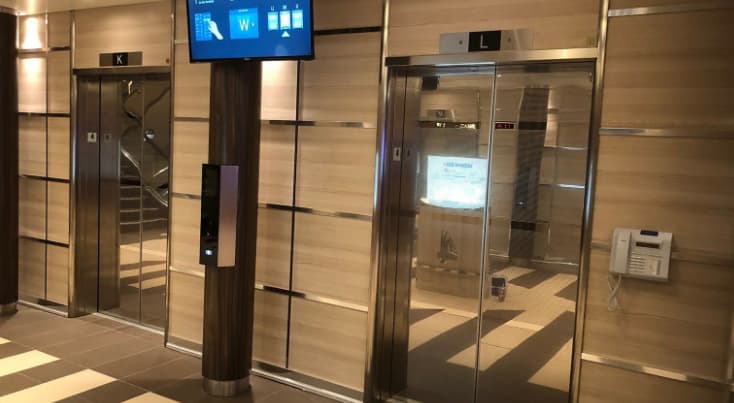Have you ever wondered what passenger elevators and platform elevators are? There are many types of elevators that meet different needs and requirements in buildings and homes, and it is easy to assume that all elevators are similar to each other
because they perform the same function, which is transporting people inside buildings, but It is important to know the difference between elevators in order to choose the right elevator for you, and this is what we offer you.
passenger elevators and platform elevators

Elevators have become an integral part of our daily lives, as they are used at home, in companies, malls, hotels, and many other buildings, and this is accompanied by the elevators transporting passengers safely and quickly, and that these elevators meet the needs desired by their owner.
You must get to know elevators in order to choose what suits your needs. Elevator operating systems differ according to the type and model of each elevator, in order to suit the diverse needs of individuals.
It is also possible for the operating systems of one type to differ according to each model of elevator, so we will learn in This article discusses the difference between passenger elevators and platform elevators, their operating systems and their different types.
An introduction to passenger elevators
The difference between passenger elevators and platform elevators is that passenger elevators are the type you find in office buildings, hotels, and remaining public places, and they are a type of elevator that transports people between floors.
It is considered the most common type of elevator around the world, and it is also called Residential elevators, department elevators, or generally called elevators.
Characteristics of passenger elevators
The passenger elevator contains many characteristics that are considered one of the reasons for the difference between passenger elevators and platform elevators, and these characteristics include:
- It holds a number of people inside that may reach about 8 or 10 people.
- The passenger elevator travels at a speed faster than 0.15 m/s, which makes moving people quickly inside buildings very simple and easy.
- Installing this type of elevator requires placing a lift shaft to house the required mechanism and also a passenger cabin.
- You choose to install passenger elevators when you expect them to be used frequently and regularly.
What are platform lifts?
In order to know what is the difference between passenger elevators and platform elevators, you must know what suction elevators are. They are a type of passenger elevator and are located inside the elevator shaft.
The elevator shaft or lift shaft consists of guide rods with a length of two angles in order to guide the carrier, which is Its shape is generally an L-shaped platform attached to a signal mast.
There are other types of passenger elevators, including closed cabin elevators. Cab elevators work in the same way as platform elevators, but instead of the rack being L-shaped, the platform is inside a box to give it a traditional feel.
There are three types of elevators: step elevators, inclined angle elevators, and vertical platform elevators.
Characteristics of platform lifts

There are several characteristics that distinguish between passenger elevators and platform elevators, as platform elevators consist of distinct characteristics, including:
- Platform lifts are called vertical platform lifts.
- It is considered one of the preferred methods that provides easier access for wheelchair users to the upper floors.
- Platform lifts are the best type for transporting small numbers of passengers traveling short distances.
- Platform lifts move at a slower speed and usually move one or two floors a lot.
- Platform lifts come in large sizes, and some can be designed to accommodate only one wheelchair user, while others can handle up to 4 or 5 people.
- The types of platform lifts vary depending on your needs.
- Installing platform elevators is much easier than other types of elevators, as they do not require drilling. This not only makes installing a platform elevator faster, but also makes it more suitable for buildings with limited space.
Features of platform lifts
To learn about the differences between passenger elevators and platform elevators,
you must learn about the features of platform elevators, including the following:
- Platform lifts are low cost.
- also Platform lifts do not require construction and demolition work.
- You don’t need to make a big hole.
- Lubrication and lubrication during use.
- Platform lifts are placed inside a shaft, so they do not require a pump box or machine room.
- It does not require structural support.
- It can transport wheelchair users and strollers smoothly and easily.
- Includes power down and spare batteries.
- Contains a security barrier.
- There is an automatic connection and an internal connection.
How do platform lifts work?
If you want to know more details about passenger elevators and platform elevators,
you must learn how platform elevators work. The drive systems used in platform elevators consist of three types, each type has unique and different advantages and disadvantages as well
and they are designed with different specifications, Modern elevators are equipped with a central processing unit that operates electronically, which moves the platform between different levels.
Hydraulic drive system
Platform elevators are connected to a hydraulic structure in order for the elevator to move up or down. A button is pressed to pump hydraulic fluid from the tank to the structure, resulting in pressure that expands the structure, which leads to the elevator rising and lowering. This system requires additional space. Until the machine is installed correctly.
Screw shaft and nut system
It is considered a type of platform elevator work system, which is used in a vertical spiral form with the same arm length. The platform is equipped with a motor that drives a nut fixed to the column, so that the elevator rises up or down when the nut is operated by the motor, depending on the direction of rotation.
The thread and drive nut of this screw are more susceptible to wear and tear,
which is why it has an automatic mechanism to facilitate routine lubrication.
Laminated chain system
It is the third type of platform elevator operating system.
This system uses a chain covered with a unique cover to ensure non-slip. This cover is distinguished by its extremely strong bearing capacity and is made of polyurethane plastic.
The gear box and motor drive the shaft connected to that chain. The chain is pushed or pulled during the process of rotating the drive shaft, which results in moving the elevator up or down. It consists of highly durable materials used in making the components, which ensures a longer life for the system.
Read more: Your guide to learn how to control the elevator
The most important differences between passenger elevators and platform elevators

After we talked about the characteristics and characteristics of both passenger elevators
and platform elevators, you should learn about the differences
that distinguish between passenger elevators and platform elevators, including:
- Passenger elevators are faster than platform elevators.
- Platform lifts have less space and are less expensive to install.
- also Passenger elevators need a lift shaft to operate while platform elevators do not.
- Passenger elevators are designed for heavier, regular use.
- Platform lifts are used to transport fewer people.
- also Platform lifts are designed for transportation over shorter distances
and are used in low-rise buildings. - It is preferable to use platform lifts to solve mobility or access problems.
The different types of elevators and their operating systems are good luck for humanity, for the benefit of the consumer, as elevators accomplish a lot of work and save time and effort. We have presented to you the two most important types of these elevators, which are passenger elevators and platform elevators, and the most important details about them.



